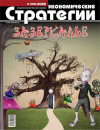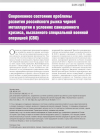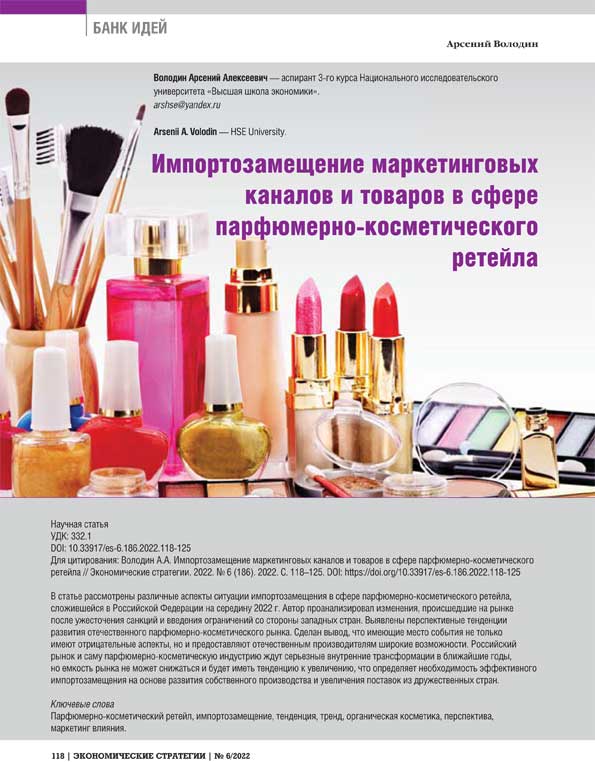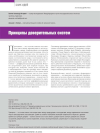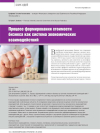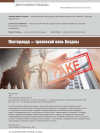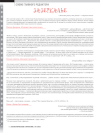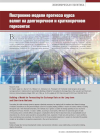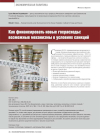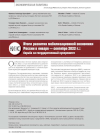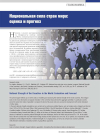The Current State of the Problem of the Development of the Russian Market of Ferrous Metallurgy under the Conditions of the Sanction Crisis Caused by a Special Military Operation
DOI: https://doi.org/10.33917/es-6.186.2022.111-117
The article studies the current state and development problems of the Russian ferrous metallurgy market in the context of the sanction’s crisis caused by a special military operation. It is shown that the conduct of a special Russian military operation in Ukraine increases the burden on the already stretched global supply chains, and the metal markets are no exception. The metals that fell under the sanctions are considered.
It is concluded that the start of a military special operation in Ukraine caused an increase in sanctions pressure on Russia from Western countries and a ban on the supply of steel products to the EU countries. It has been determined that under the current conditions, the issue of redistributing production volumes to other markets becomes the most relevant for the industry, while the replacement of falling volumes will occur by increasing supplies to Asia, the Middle East and Latin America, as well as to the domestic market.
References:
1. Bazhenov O. V., Baev D.V. Vliyanie pryamykh zarubezhnykh investitsii na razvitie otrasli chernoi metallurgii v Rossii [Impact of Foreign Direct Investment on the Development of the Ferrous Metallurgy Industry in Russia]. Izvestiya vysshikh uchebnykh zavedenii. Chernaya metallurgiya, 2017, no 60(1), pp. 67–73.
2. Kostyukhin Yu.Yu. Potentsial promyshlennogo predpriyatiya i ego ispol’zovanie [Potential of an Industrial Enterprise and its Application]. Moscow, MISiS, 2019, pp. 87–92.
3. Kostyukhin Yu.Yu. Formirovanie sistemy upravleniya postupatel’nym razvitiem metallurgicheskogo predpriyatiya na osnove ego potentsiala [Establishing the Management System for Progressive Development of a Metallurgical Enterprise on the Basis of its Potential]. Moscow, MISiS, 2020, pp. 98–104.
4. Kostyukhin Yu.Yu. Strategicheskoe upravlenie rossiiskoi metallurgiei v usloviyakh vyzovov i riskov [Strategic Management of Russian Metallurgy in the Face of Challenges and Risks]. Upravlencheskie nauki, 2022, no 2, available at: https://cyberleninka.ru/article/n/strategicheskoe-upravlenie-rossiyskoy-metallurgieyvusloviyah-vyzovov-i-riskov.
5. Kharlanov A.S. Analiz trendov mirovogo metallicheskogo kompleksa v period postpandemiinogo vosstanovleniya: chernaya i tsvetnaya metallurgiya [Analysis of Trends in the Global Metal Complex in the Period of Post-Pandemic Recovery: Ferrous and Non-Ferrous Metallurgy]. Innovatsii i investitsii, 2021, no 3, available at: https://cyberleninka.ru/article/n/analiz-trendov-mirovogo-metallicheskogo-kompleksa-v-period-postpandemiynogo-vosstanovleniya-chernayai-tsvetnayametallurgiya.
6. Shtanskii V.A. Obespechenie ustoichivogo innovatsionnogo razvitiya predpriyatii metallurgicheskogo kompleksa [Ensuring Sustainable Innovative Development of Metallurgical Complex Enterprises]. Ekonomika promyshlennosti, 2019, no 4(12), pp. 466–472, DOI: 10.17073/2072-1633-2019-4-466-472.
7. Promyshlennoe proizvodstvo v 2021 godu [Industrial Production in 2021]. Rosstat, available at: https://rosstat.gov.ru›folder›document.



